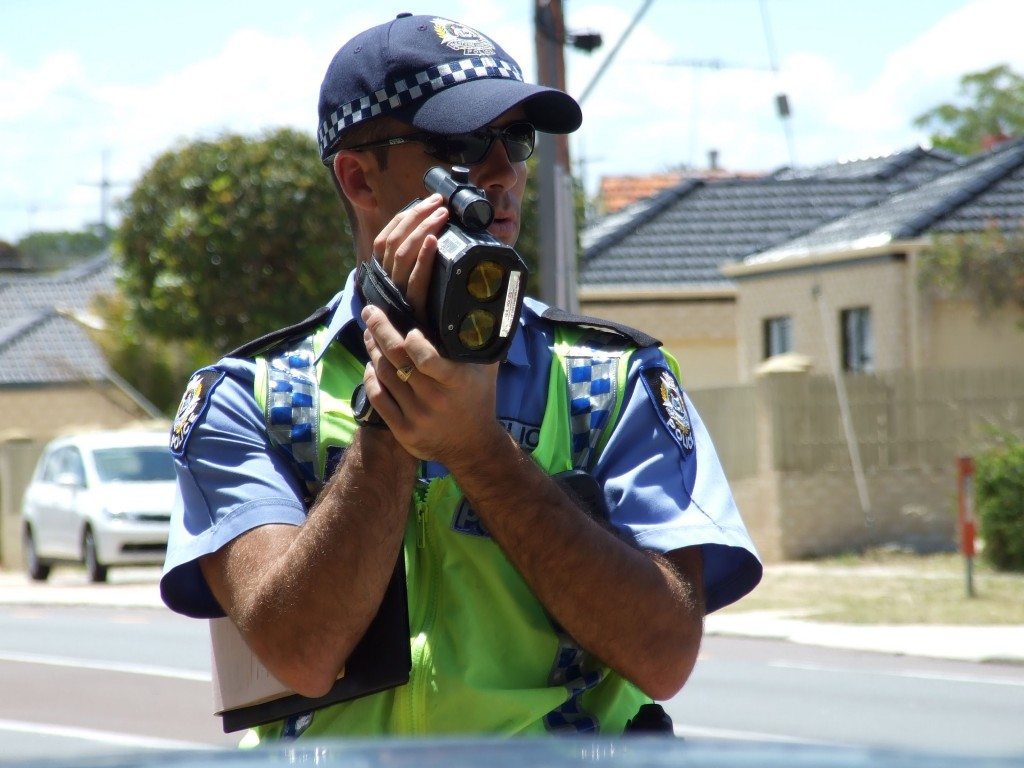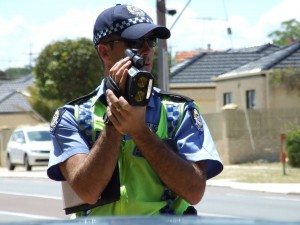The Eighth District Court of Appeals decided an interesting case last week regarding expert testimony, judicial notice and radar speed guns in Ohio. Cleveland v. Craig, 2013-Ohio-5742. The case delves into the history of radar speed devices and the ways in which Ohio courts have tested and determined their accuracy from the 1950’s forward.
The facts of the case itself are straightforward. The defendant was charged with speeding in a school zone, charged in the case as a third-degree misdemeanor. The defendant was driving on a road that is normally 35 mph, but is reduced to 20 mph in school zones during certain hours. The officer testified that he observed the defendant’s car moving faster than the flow of traffic and estimated the speed at 30-32 mph. His radar showed 32 mph. At trial, the defendant testified that she believed the speed limit was 35 mph and did not believe she was speeding. She said she was going “20 something” when she was pulled over.
The question before the Court of Appeals was this: Can an Ohio court take judicial notice of moving radar generally? Or can a court only take notice of a specific radar device? Or does an expert have to testify in each case to establish the accuracy of radar technology?
History of the Police Radar Speed Gun
The case is interesting because it takes a historical look at the development of radar. The case notes that radar was initially developed in England in the late 1930’s. The radar speed gun was developed for the military during WWII and the inventor, John Barker Sr., tested on cars in Connecticut when he returned from the war.
The case cites a recent interesting article in the New York Times – Pagan Kennedy, Innovation: Who Made That Traffic Radar?, The New York Times (Aug. 30, 2013). Barker had been working on traffic lights in the 1930’s prior to the war, but focused his attention on military uses during WWII.
The New York Times article notes that in 1947, the town of Glastonbury, Conn., first tried out the radar gun, “creating what was perhaps the world’s first speed trap.” The article notes that the radar was first challenged in 1955 by a Connecticut woman contested her speeding ticket in court. At trial, her attorney “protested about a ‘lack of fair play’ on the part of the police for pointing this high-powered, wartime technology at drivers.” The inventor – Barker – himself testified at the trial. Apparently, he was called in frequently as an expert witness to defend his invention.)
Today, officers use digital radar guns — far more accurate than the old analog radar.
Ohio Courts Take Judicial Notice of Stationary Radar Accuracy
The Craig case goes on to note that more than 50 years ago, the Ohio Supreme Court held that the reliability of the scientific principles underlying the use of stationary radar could be established without the need for expert testimony. E. Cleveland v. Ferell, 168 Ohio St. 298, 154 N.E.2d 630 (1958), syllabus. This means that the prosecutor was not required to get an expert in every speeding trial to “reprove” each time the accuracy of the radar technology.
The Ferell case, however, dealt with stationary radar using the “S” band frequency–which was the only device used in the 1950’s. As technology evolved and police began using moving radar devices, Ohio courts changed their stance a bit. For a time, Ohio courts held that where a moving radar device is involved, “expert testimony or judicial notice of the construction and accuracy of moving radar devices is required to sustain a conviction based on a reading from such device.” Cleveland v. Craig, 2013-Ohio-5742. {¶17}
The Current Standard: Uncertain
The Eight District Court of Appeals (Cleveland) went further, holding in 2008 that “all radar-based speed measuring devices in use today, and arguably all laser-based units now in use, are reliable, even in the absence of expert testimony as to their reliability.” Tisdale, 8th Dist. Cuyahoga No. 89877, 2008-Ohio-2807, at ¶ 15.
The focus of a challenge in court today, then, is generally on “the accuracy of the particular speed meter involved as established by proper calibration and the training and qualifications of the person using it, rather than the science behind it.”
Discussing the proper standard to apply, the Cleveland Court of Appeals found that unless the Ohio Supreme Court says otherwise, it will continue to hold that stationary radar devices are reliable and the prosecution doesn’t need to bring in an expert to establish reliability.
As for moving radar and laser speed devices, the Court of Appeals made a direct appeal to the Ohio Supreme Court, stating: “Further, in light of the increasing debate among appellate courts, we would encourage the Ohio Supreme Court to consider whether expert testimony should be required to establish the general reliability of moving-radar and laser speed devices.”
In the Craig case, the officer’s vehicle was stationary when it clocked the defendant going 32 mph. Because it was stationary, it was admissible without expert testimony. Additionally, the officer’s qualifications, certifications, and proper calibration of the device were established. Cleveland v. Craig, 2013-Ohio-5742.
It will be interesting to see what happens next. Will the Ohio Supreme Court take up the issue of expert testimony in the context of moving radar and laser speed devices?




